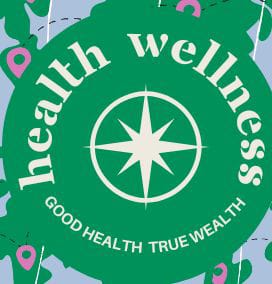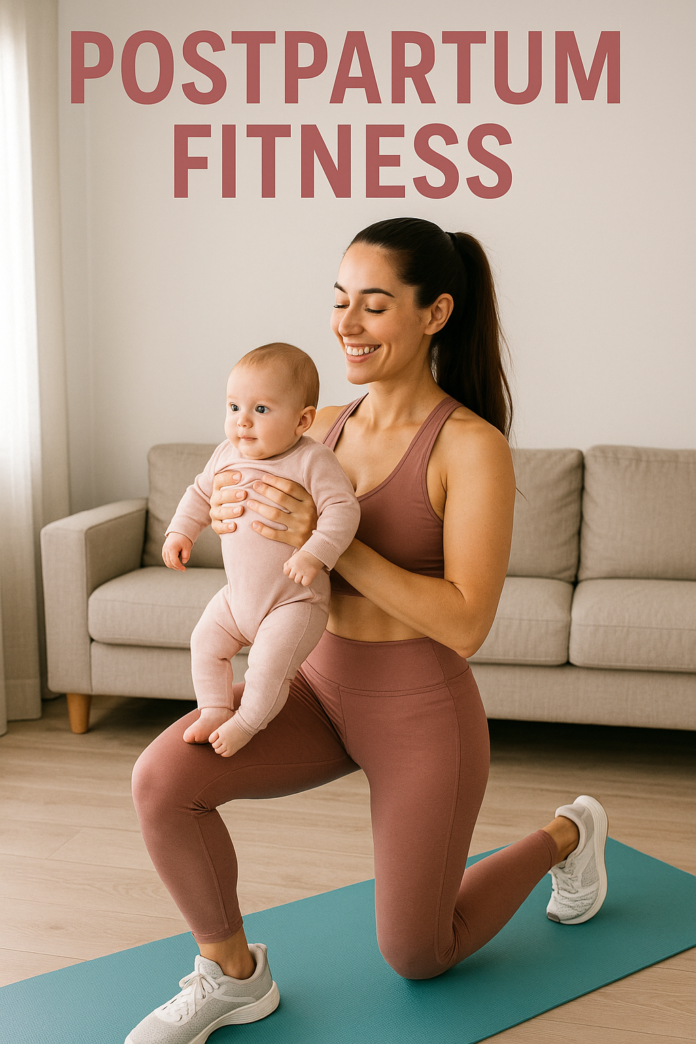What is postpartum fitness? Postpartum fitness stands among questions that new mothers commonly ask after giving birth. After pregnancy women need to perform activities and exercise to gain back their pre-pregnancy strength and flexibility and improve stamina levels. Emotional and mental fitness constitutes part of this concept. The objective focuses on gradual safe restorations of the body to help mothers reach or surpass their fitness condition from before pregnancy.
Why is Postpartum Fitness Important? The definition of postpartum fitness requires basic understanding because pregnancy brings extensive body changes to women. The body becomes weak and unbalanced since pregnancy involves hormonal changes together with weight gain as well as muscle stretching. When individuals neglect their fitness after childbirth such problems endure and produce lasting effects on their well-being.
Key Benefits of Postpartum Fitness: . Boosts energy levels . Reduces postpartum depression . Improves sleep . Strengthens muscles and joints . Aids in healthy weight loss . Promotes mental well-being Postpartum fitness starts with understanding its definition following these explanations about its commencement process.
When to Start Postpartum Fitness? Every woman’s body heals differently. Medical professionals indicate that women should wait for six weeks following normal delivery and eight to twelve weeks following a C-section before starting any fitness program. Your healthcare provider must approve light walking and stretching exercises before you start them but some patients might receive permission sooner. Discuss with your doctor first. Your doctor holds the authority to authorize postpartum exercise commencement.
What is Postpartum Fitness Routine? This article will explore each element that makes up a fit and healthy physical activity routine after birth.Understanding the definition of postpartum fitness requires studying the exercises which are suitable for new mothers post-childbirth. 1. Walking Walking provides new mothers with one of the most convenient ways to begin postpartum fitness exercises.The exercise provides minimum impact to your body while improving blood circulation and remains possible even when you use a baby stroller.The minimal physical activity helps the body return to exercise safely. 2. Kegel Exercises Pelvic muscles weaken frequently following childbirth because of natural delivery.Performing Kegel exercises both strengthens the pelvic floor muscles and decreases bladder leakage problems while facilitating healing. 3. Gentle Yoga and Stretching Postpartum yoga teaches its followers techniques for breathing along with methods for relaxation and controlled physical exercises.The practice provides stress relief along with pain reduction for the back and strengthens muscular flexibility. 4. Core Strengthening The essential part of what is postpartum fitness includes restoring core strength as a key component. Pregnancy stretches abdominal muscles. A person can safely rebuild their muscle tone using basic body exercises of pelvic tilts and bridges. 5. Light Strength Training You should add modest weights for training your arms and legs after a brief period.The exercise enables individuals to perform tasks such as baby lifting and grocery carrying.
Postpartum Fitness and Mental Health The core components of postpartum fitness include mental wellness. Most women develop postpartum depression yet physical activity proves to be an organic method for managing this condition. Postpartum care for emotional well-being includes both exercise classes with other mothers and walking companionship. Self-care meets similar goals. When depression symptoms continue it is necessary to get professional help.
Nutrition and Hydration in Postpartum Fitness this subject becomes incomplete when you lack both proper nutrition and hydration. Health recovery demands something beyond physical activities alone. Foods that contain balanced nutrients including proteins as well as vitamins and minerals assist tissue healing while building up power levels in the body. Key Nutritional Tips: . You should maintain proper hydration through 8–10 daily water consumption. . Crash diet programs should be omitted because weight reduction needs steady progress. . When dieting abruptly it causes negative effects on milk production and energy levels.
Common Mistakes in Postpartum Fitness An understanding of postpartum fitness requires knowledge about both correct fitness behaviors as well as improper actions.After giving birth numerous female parents attemp to restore their bodies rapidly which ends in physical damage. Mistakes to Avoid: . Doing high-impact exercises too soon . As a postpartum fitness beginner you should avoid neglecting both core exercises and pelvic floor conditioning. . Skipping warm-up or cool-down routines . Comparing your progress to others Neglecting rest and sleep Listen to your body. Take breaks whenever needed along with a self-determined speed of development.
Postpartum Fitness Timeline This is an approximate postpartum fitness schedule according to the principles of this subject : . Week 1–2: Gentle walking, breathing exercises The addition of Kegels stretching and light yoga exercises should happen between . weeks 3 to 4.The core exercise program can start after consulting with a doctor during . week 5 to week 6 of postpartum. . Week 7–8: Light strength training, longer walks When the body develops strength the exercise intensity can be increased after 2–3 months of recovery.
The definition of Postpartum Fitness specifically tailored for C-section mothers includes how much time they need and which exercises to perform. A C-section recovery process differs from regular delivery and demands a longer recovery time. this subject for mothers who underwent C-section delivery involves following two fundamental principles: patience and gentleness. 1 Patients must delay most abdominal exercises beyond 8–10 weeks of the postpartum period. 2 The focus should remain on breathing exercises and pelvic tilts together with walking. 3 Always follow your doctor’s guidance. 4 Role of Professional 5 Help in this subject 6 A this subject trainer can provide assistance along with joining a fitness program. 7 A trainer possesses knowledge about postpartum fitness and customizes workouts based on your physical condition. 8 Physical therapists provide help in treating diastasis recti (ab separation) as well as pelvic pain and any other postpartum medical complications.
Tips to Stay Motivated Establish achievable objectives rather than pursuing absolute perfection because consistency matters more than everything else. Having a set schedule regardless of how brief it may be proves beneficial. Involving your baby during physical activities creates motivation by dancing with them or walking together or stretching side by side. Keep track of your fitness advances by using either a fitness application or writing journal entries. Each little achievement deserves genuine celebration because it holds great importance.
What is Postpartum Fitness? . A Lifelong Journey The postpartum fitness journey supports the harmonious development of body along with your mental focus and spiritual self. . The journey to being fit after childbirth requires you to rediscover your capabilities. . Through this subject activities women discover new strength which strengthens their self-confidence to become confident mothers. . Your body gave birth to life so it requires attention along with patience and true love.
Conclusion Postpartum fitness includes physical workouts together with emotional balance along with nutritious eating and personal affection for oneself. Women use this path to recover their strength while adopting beneficial life habits. The combination of easy exercises with consistent practice and appropriate help seeking allows women to experience postpartum fitness in an enriching way which empowers motherhood. Before taking any steps consult with your physician and follow your bodily signals at all times.





